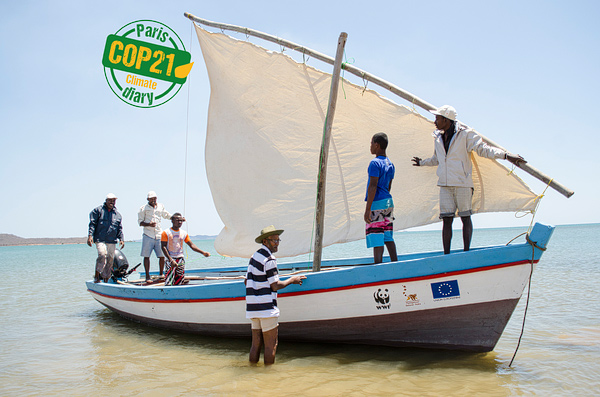The coral reefs in the Marine Protected Area of Nosy Hara, in Northwest Madagascar are among the best preserved reefs in all the Northern Mozambique Channel.
Analyses done between 2011 and 2013 to determine the areas vulnerability to climate change have highlighted early signs of the overexploitation of the reefs: poor biomass, abundant juvenile fish,a small overall fishsize and a very low number of adult fish.
This is being partly attributed to the «Varatraza », a trade wind that runs along the southern coasts of Asia and the Western Indian Ocean, which passes directly through the North of Madagascar. This strong wind hinders the Antakarana population living in the North of Madagascar to go beyond the coral reefs, forcing them to fish inside the shelter of the reefs and leading to overfishing in these spots
Realizing the Varatraza was crippling the livelihoods of the local communities, WWF, in collaboration with Madagascar National Parks, provided equipment to the Nosy Hara fishermen that permits them to go beyond the reefs and safety fish in the bigger waters being driven by the trade winds. The local fishers received seven 7m boats with 12m sails and four-stroke 15 horsepower outboard engines, life jackets, long lines, insulated boxes to preserve their catch, weighing equipment and plastic containers to transport the fish. The fishers were also given training workshops in entrepreneurship and management of small fishing companies.
Benefits for populations
- Strengthening the resilience of populations and facilitating their adaptation to climate change,
- Providing sustainable livelihoods to the communities to help them plan their future,
- Helping fishermen find alternative sources of income through opening up new opportunities in the form of providing transport forvillagers, tourists and goods.
Benefits for Nature
- Strengthen the resilience of Nosy Hara coral reefs
- Protect coral reefs from overexploitation,
- Mitigate anthropogenic pressures on fish and reef species.
- Ensure the regeneration of the coral and maintain reefs’ coral coverage in a sustainable way,
- Engaging fishers to perform community surveillance patrols for the Nosy Hara reefs.


